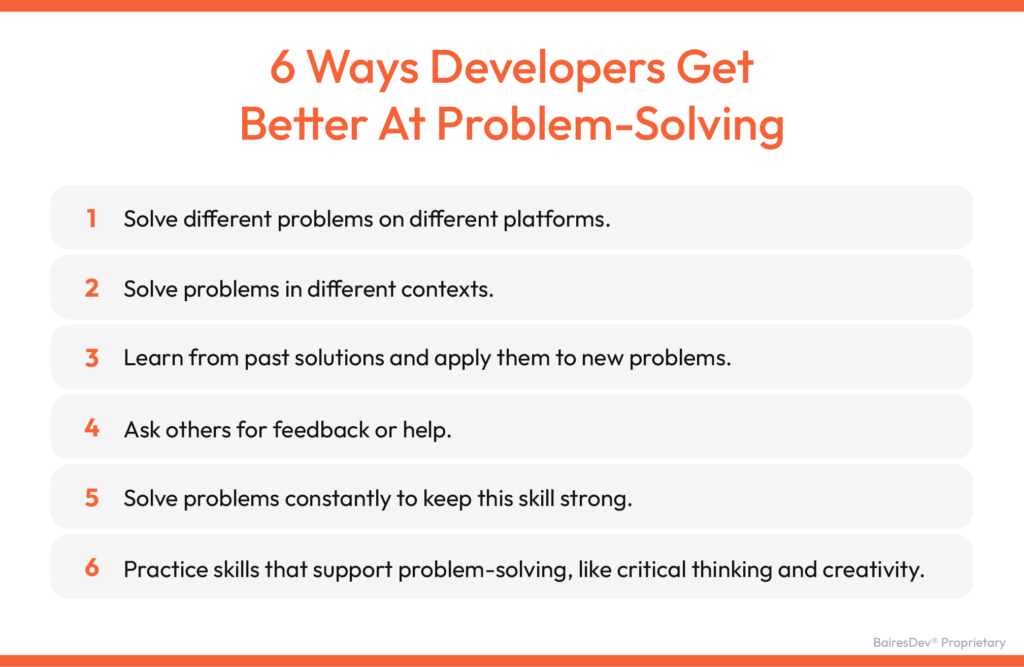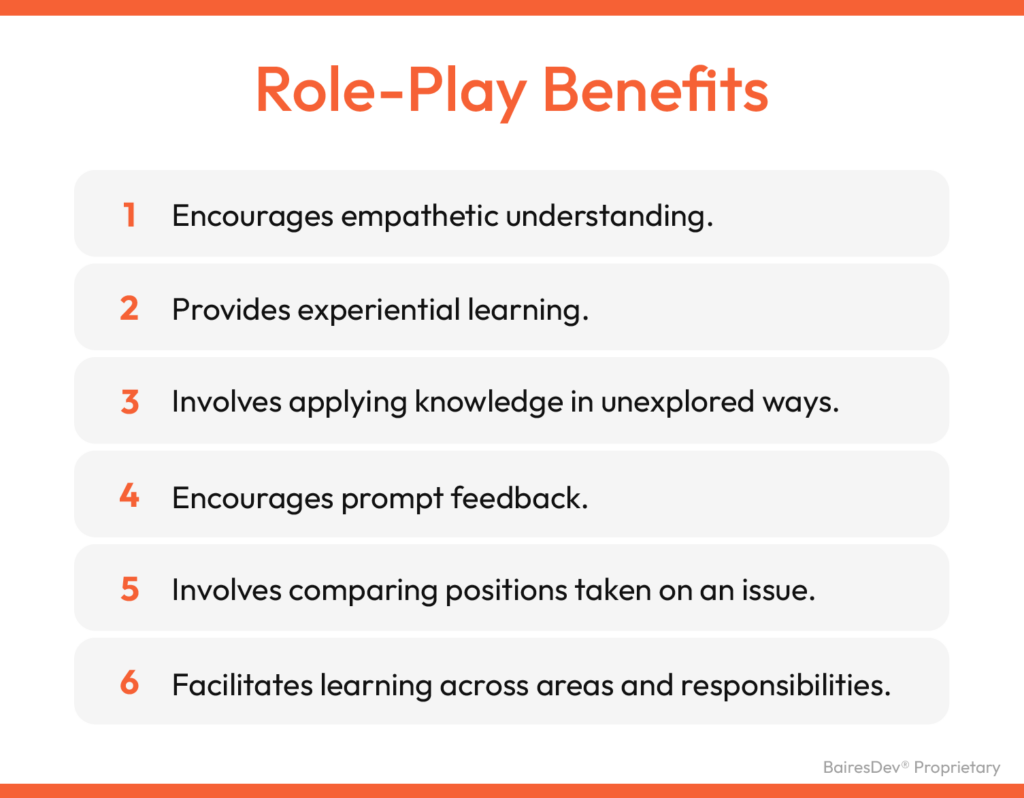If you find that your developers are stagnant and having trouble with their projects or just thinking beyond standard operating procedure, get them thinking creatively and with renewed enthusiasm.

In 2021, DevOps.com reported an 83% burnout rate among software developers. A study conducted in October 2023 showed it remained high at 79% , with no significant decrease. According to ZipDo, 19% of software projects fail completely and 20% are delivered late. Even worse, Digital Village reported a 70% failure rate on development projects. What is happening?
Projects often fail or experience delays, and developers can experience burnout for a variety of reasons. A common factor is that developers get stuck in a repetitive cycle, constantly dealing with the same tasks and projects in an endless backlog. This 'same age' situation is not beneficial for your business.
Fortunately, there are things you can do to encourage developers to think outside the box. Once freed from the chains of too much repetition, developers will flourish in ways you never imagined.
When your developers strive to think beyond the constraints of their normal workflow, projects will be more creative, reliable, and delivered on time.
Who doesn't want that? The big question is how to get these developers to think outside the box.
Let's explore the possibilities.
Mix the teams
This is probably the simplest thing you can do. You probably have teams that have been working together for a long time. These teams are likely made up of the same members doing the same things, writing similar code to what they've already written, having the same deadlines, working with the same managers, and becoming complacent about their work.
Instead of allowing this to continue, mix up team members. You might have a backend developer who has never had to work with UX and is facing issues where they can't seem to overcome their latest “problem”. Move that backend developer to the UX team for a brief period. By doing this, the back-end developer will gain a better understanding of how the front-end of a project works.
While these backend developers may not have the skills needed for UX or frontend design, they are only on this team for a short time, so they will broaden their mindset and be able to approach the backend from a different perspective.

Bring them all together
In addition to mixing up your teams, another way to increase developer creativity is to bring all teams together for what you might call “idea festivals.” These meetings can be held regularly in a shared space in the building or digitally. The goal is to cross-pollinate ideas between teams that would not normally interact.
The great advantage of these types of meetings is that teams will spark each other's creativity, so they will come away with a new spark and ideas that they otherwise wouldn't have thought of.
Make them problem solvers
One thing many developers miss is how to solve a problem and why. When your developers are only focused on how they may not know exactly why a specific problem needs to be solved.
For example, you may have a specific customer base that involves special needs or a very specific use case for a solution that has not been clarified. If your developers only know that they need to get from start to finish before the set delivery date and have no idea why the solution is being created, they may not be able to bring creativity to the table.
When presenting a project to your development team, make them part of the solution, not just for the project, but also for those for whom the project is being developed. With this information, your developers will be better able to think beyond the how of the project, but also the why, and the why can be a very special motivator.

Make them part of the decision process
Developers are often left out of early decision-making processes. Instead, they are given marching orders and expected to do great things. Instead of leaving them out of the initial decision process, they should participate in these meetings. When you make these developers part of the decision-making process, they will not only have special insight into how best to create the project, but they will also feel as if they have been empowered to offer suggestions that could improve the process or even the final result.
Even better, your developers will feel more part of the whole, which will give their creativity a much-needed boost.
Give them the opportunity to go it alone
Some developers prefer to work in teams. They work with the energy that comes with collaboration. Other developers like to work on their own. You may not always have the opportunity to give these developers the chance to work alone, but when you do, you should.
This doesn't need to (nor should it be) a permanent basis. Instead, you may have an instance where a specific function or API needs to be created or integrated. Such a situation could be the perfect opportunity to give those who prefer to work for themselves the opportunity to do so.
One important thing is to make it clear that this is not a permanent change and that at some point, those who you have given permission to work alone will (eventually) have to return to your team.
Try some role play
While many developers may be proud of their Dungeons & Dragons skills, that's not what we're talking about.
You could have your development teams do some role-playing, where they put themselves in the shoes of other stakeholders. Your backend developers can represent your frontend developers. Your UX team can take on the customer’s persona. Your database developers can wear a management hat.
The important thing is to give these developers the opportunity to see things from a different perspective. This could give them insights they wouldn't otherwise have. These insights will often fuel your creativity.
These role-play sessions can take the form of official meetings or even unofficial meetings. The key is to make them fun and informative. You'll find that developers leave these types of meetings with a renewed interest in the projects at hand.

Stop complacent
It's time for you to stop being content with development teams moving on. They may be delivering on time, but are they bringing their best, most creative work to the table? With a little thought, you can inspire these developers to think outside the box without having to dive deeper into your company's budget.




















































